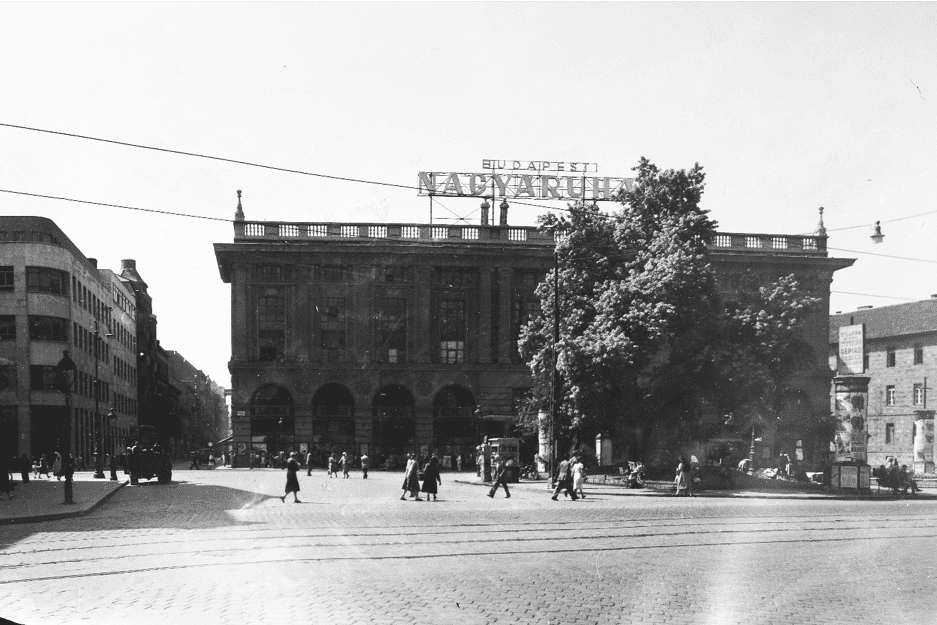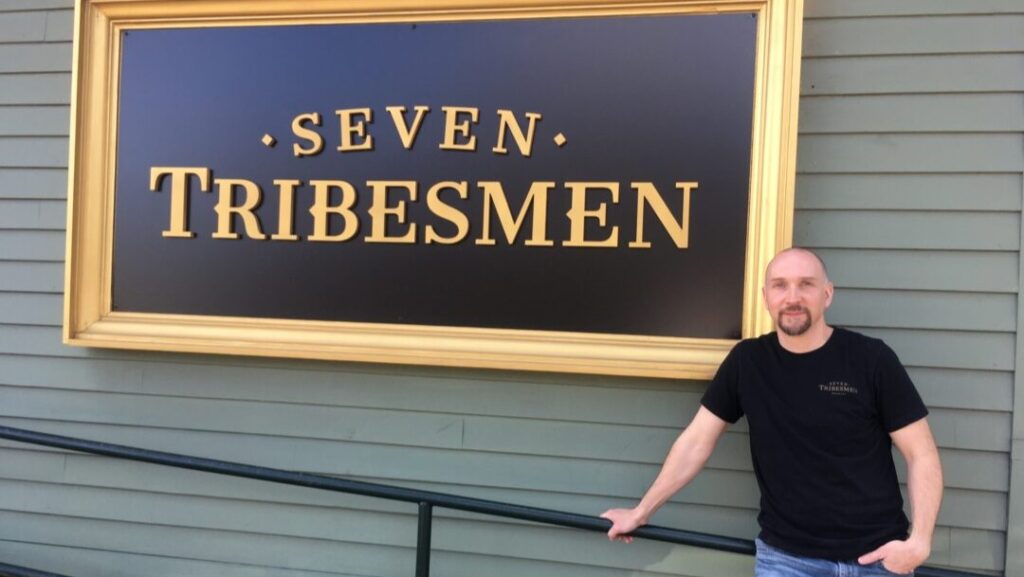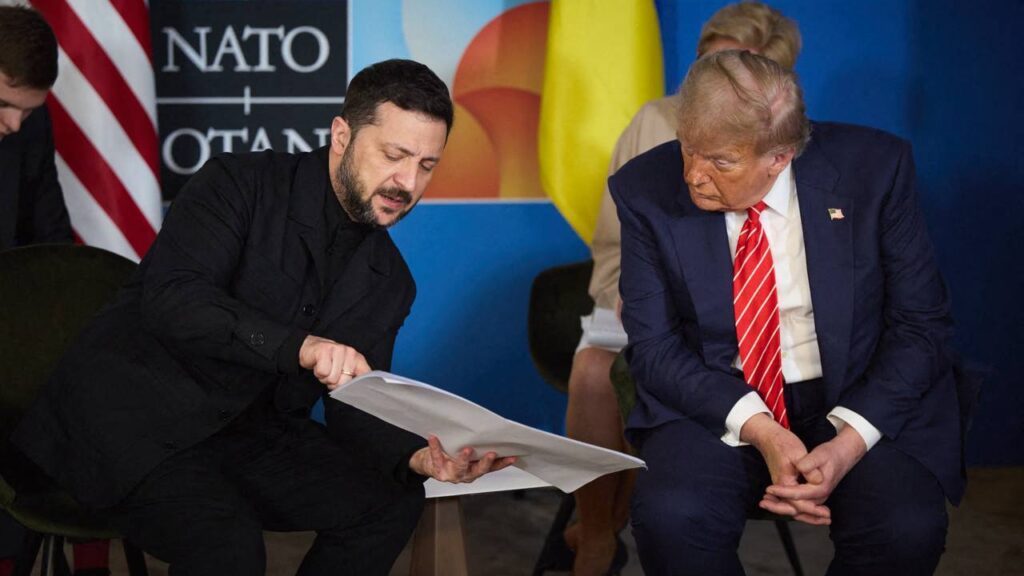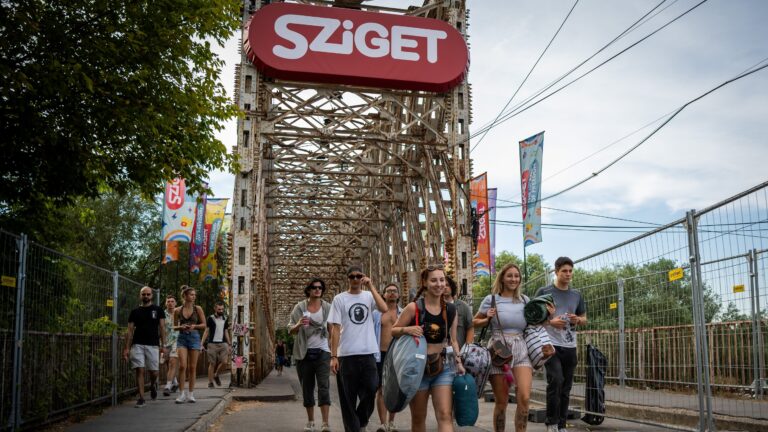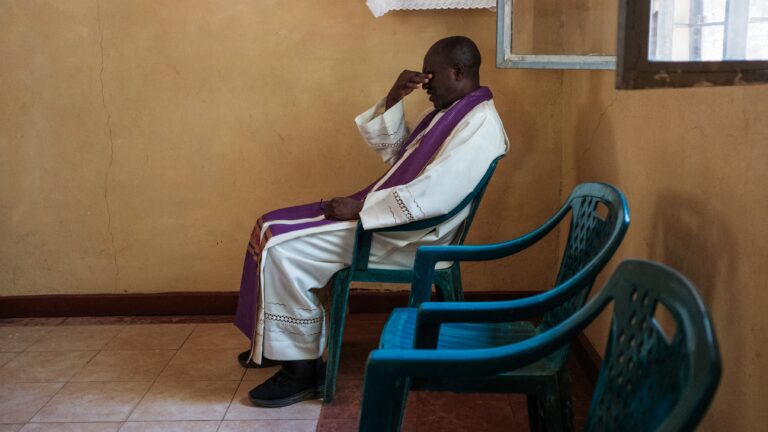The construction of one of Budapest’s oldest department stores began in 1915, at what used to be 1-2 Népszínház Street. The Apolló Cinema, which had been operating there until then, had to move. Eleven years later, on 1 March, the Corvin Department Store, which has undergone many transformations over the past nearly one hundred years, welcomed its first customers.
The neoclassical building of the Corvin Department Store was designed by Zoltán Reiss, and the first managing director of the store, and vice president of the joint-stock company that owned it, was Miksa Lewin, who described Corvin as ‘a brainy community of specialty shops.’ The department store, which looks like a one-storey building because of its façade, has in fact four stories. Upon entering the building, customers found themselves in a glass hall, and on the façade, they could see the plastic arts and sculptures of Hungarian sculptors Szigfrid Pongrácz and Fülöp Ö. Beck.
It was not only clothes one could by in the store; it also had a restaurant, a coffee house, a ticket office, a dry goods shop, a millinery and a ferrotype shop as well.
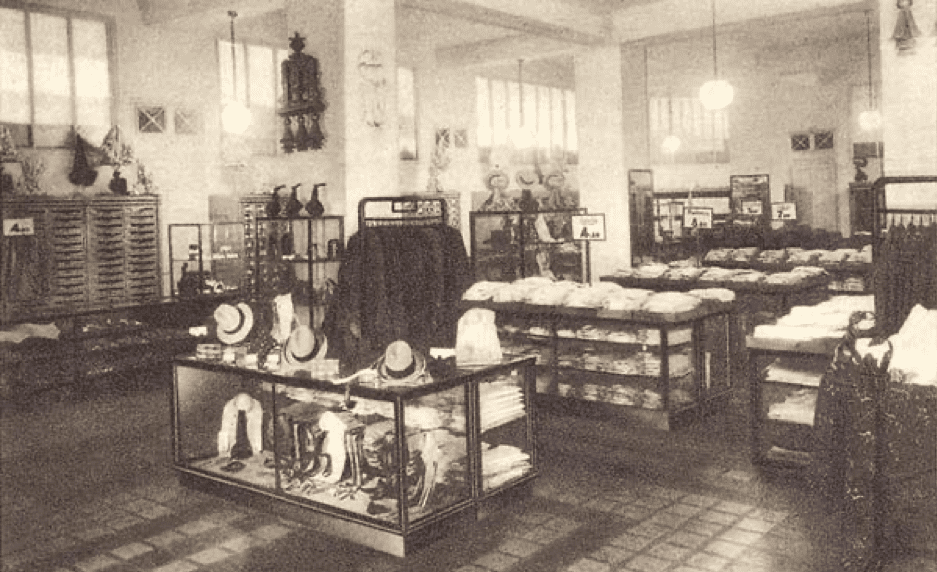
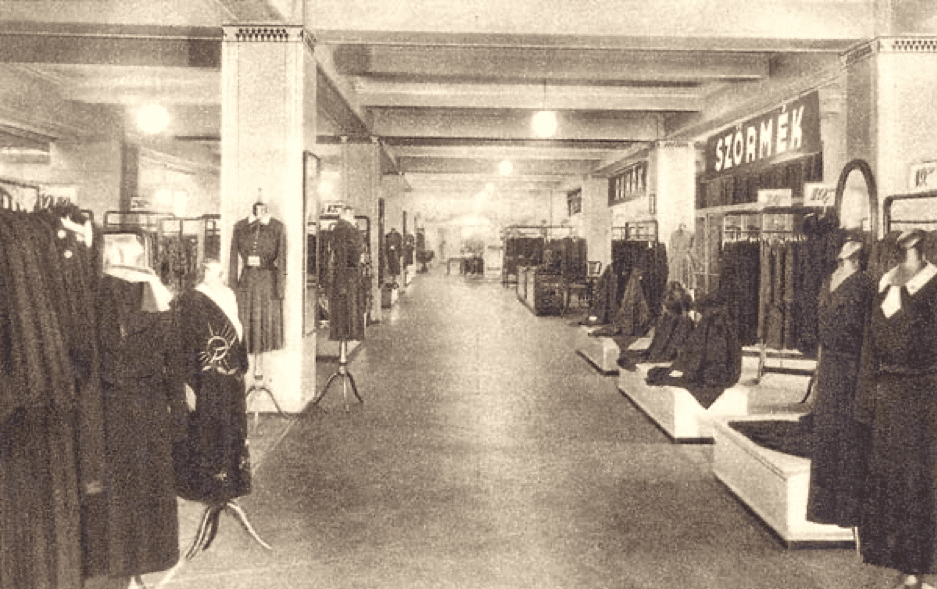
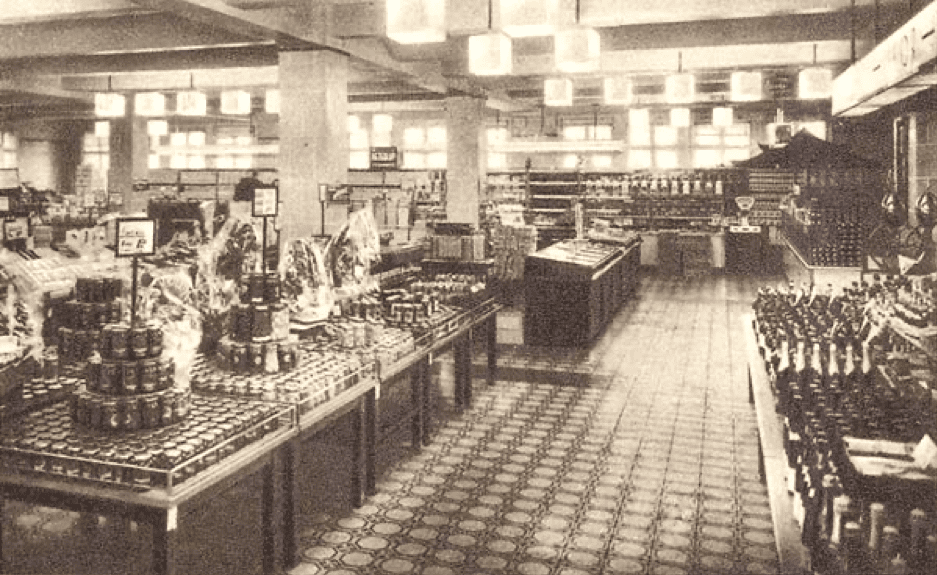
Due to Corvin’s popularity, the area became one of the busiest junctions in the city. The department store gave home to fashion shows and exhibitions for a long time as well, and, according to Pesti Hírlap Képes Naptára (Calendar of the Newspaper of Pest), ‘(…) just as European fashion is dictated by Paris, that of the capital is dictated by Corvin, and it does it with a very lucky, masterful hand.’ In 1931, the first and, for a long time, the only escalator in Hungary was inaugurated over here.
During the siege of Budapest, the building suffered only minor damage, but later it was ravaged by fire and had to be closed at Christmas in 1944. After WWII, it fell victim to nationalisation, and after its partial reconstruction, it continued to operate under the name of Budapest Nagyáruház (Budapest Grand Store).
The 1956 revolution and freedom fight caused more damage to the building than the previous siege. The former department store stood in ruins for almost ten years, until it became the property of Országos Áruházi Vállalat (National Department Store Company, later Centrum Áruházak) and continued to operate as Centrum Corvin Department Store. It was then that its internal and external renovation began, during which, in 1967, the aluminium cladding covering the ruinous façade, intended only as a temporary solution, but defacing the building for more than half a century, was also installed. According to architectural online magazine Építészfórum (Architects’ Forum), ‘although the cladding was not placed directly on the walls and the facade ornaments were not knocked down, its fixing involved more destruction than the firefights of the world war and the revolution combined.’
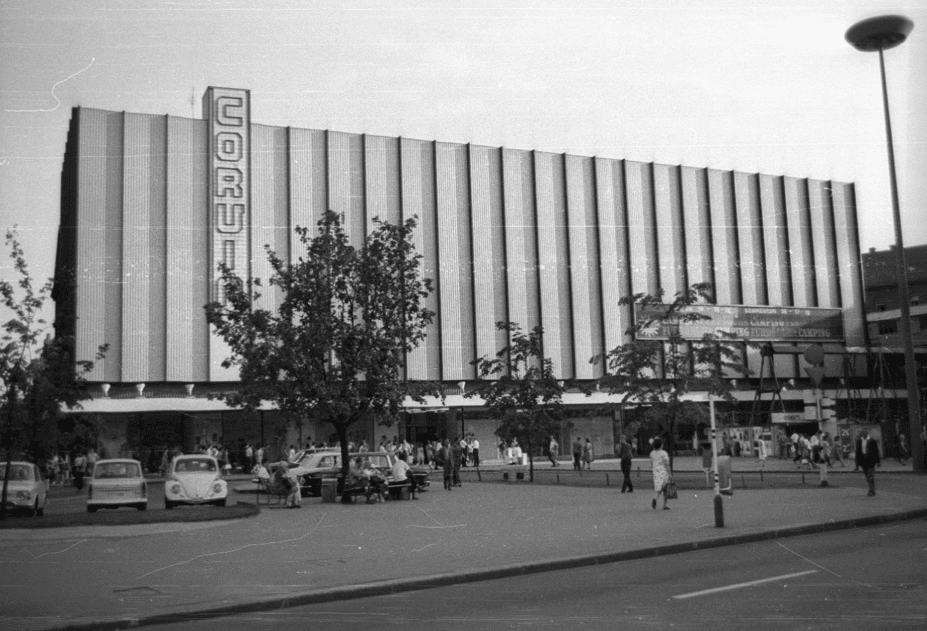
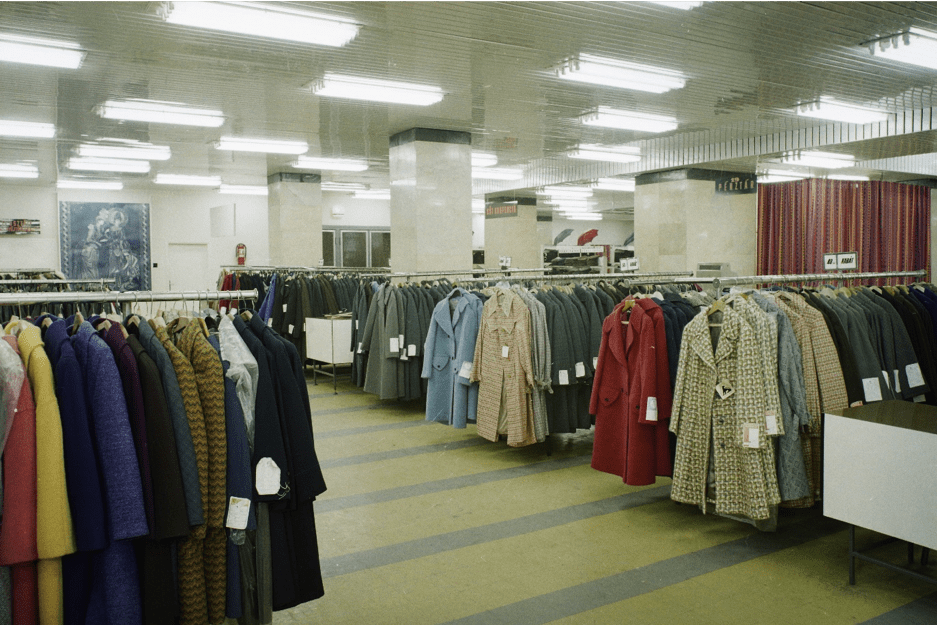
The decline of Corvin Department Store, which was once considered the most modern department store in Budapest, began in the mid-70s, when Skála Department Stores, Corvin’s competitors, began to open along the route of Tram 4-6, and a decade and a half later Corvin went out of fashion.
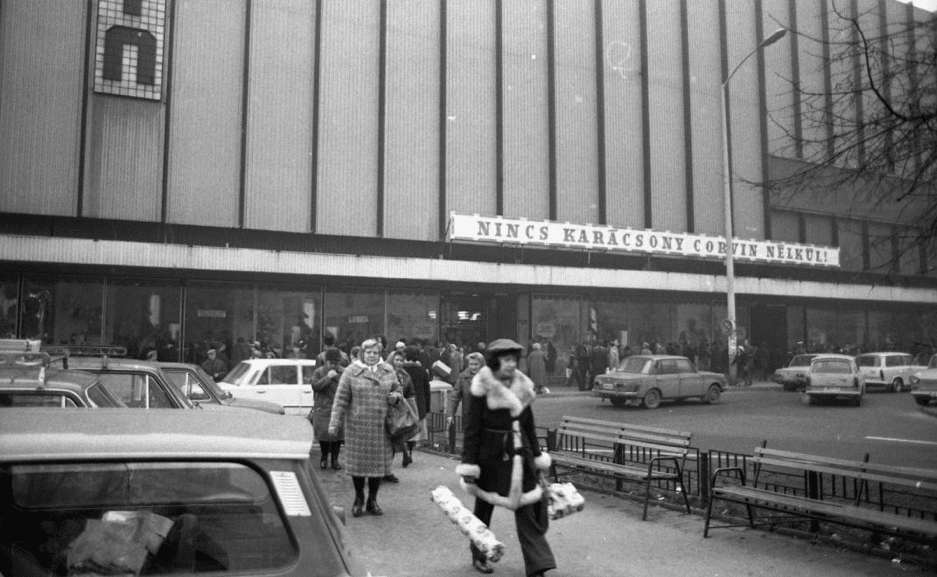
The ‘shopping centre boom’ following the regime change did not help its situation either—around this time, Centrum and Skála Department Stores merged, so Corvin, too, became the property of the latter. At that time, its renovation was considered again, but the plan came to nothing in the end.
From the 2000s, most of the ground floor was occupied by retail chain Spar, along with a Libri bookstore and a BÁV pawnshop, while the first floor housed Chinese-owned clothing stores, a jewellery, and an Avon store. Between 2012 and 2017, the third floor housed an independent cultural and community centre, MŰSZI (Community and Art Centre), and, on the roof terrace, Corvintető, the city’s leading underground club and entertainment venue operated.
Corvin Department Store was included in the plans of the Blaha Lujza Square renovation programme as well: in 2014, the district municipality obliged the owner (Corvin Áruház Ingatlanhasznosító Kft.) to remove the aluminium cladding, which took place in the spring of 2018.
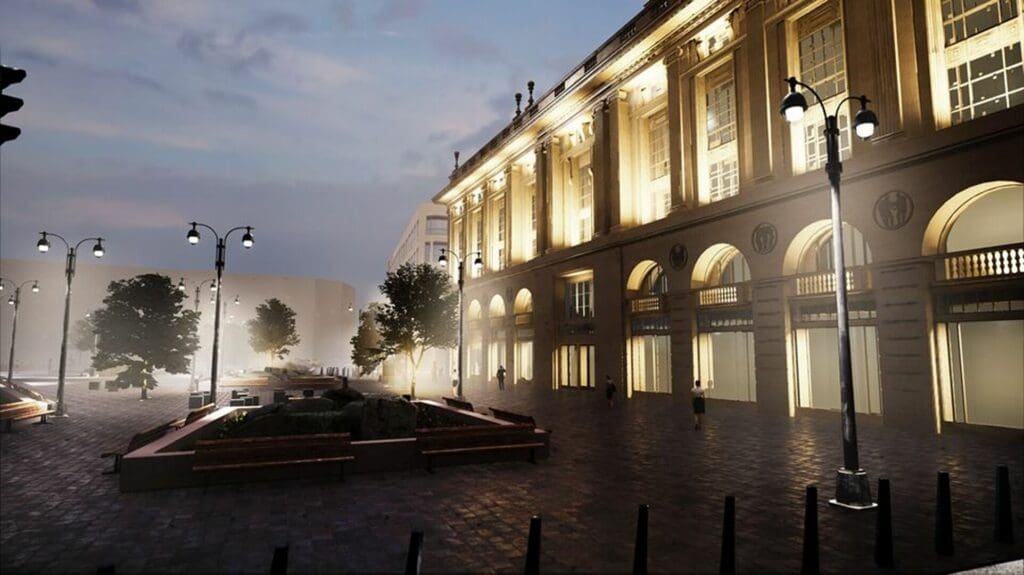
The 2014–2020 Integrated Urban Development Strategy of Budapest’s 8th district Józsefváros quarter lays out the plans of the renovation of Blaha Lujza Square, including the restoration of the department store.
At a town hall meeting held in the Palace Quarter in February 2019, Attila Egry, deputy mayor of the district, said about the facade reconstruction: ‘The building is about to undergo a complete transformation, and the interior functions are currently being planned. As the last phase of the works, the owner plans to restore the façade, parallel with the renovation of Blaha Lujza Square.’
The façade has already been restored and part of the scaffolding was removed on 14 September. The renewed department store is expected to open its doors in the spring of 2023. Budapesters can hardly wait for the renovation to be finished and to see the Corvin Department Store in a condition worthy of its former self.
Click here to read the original article

